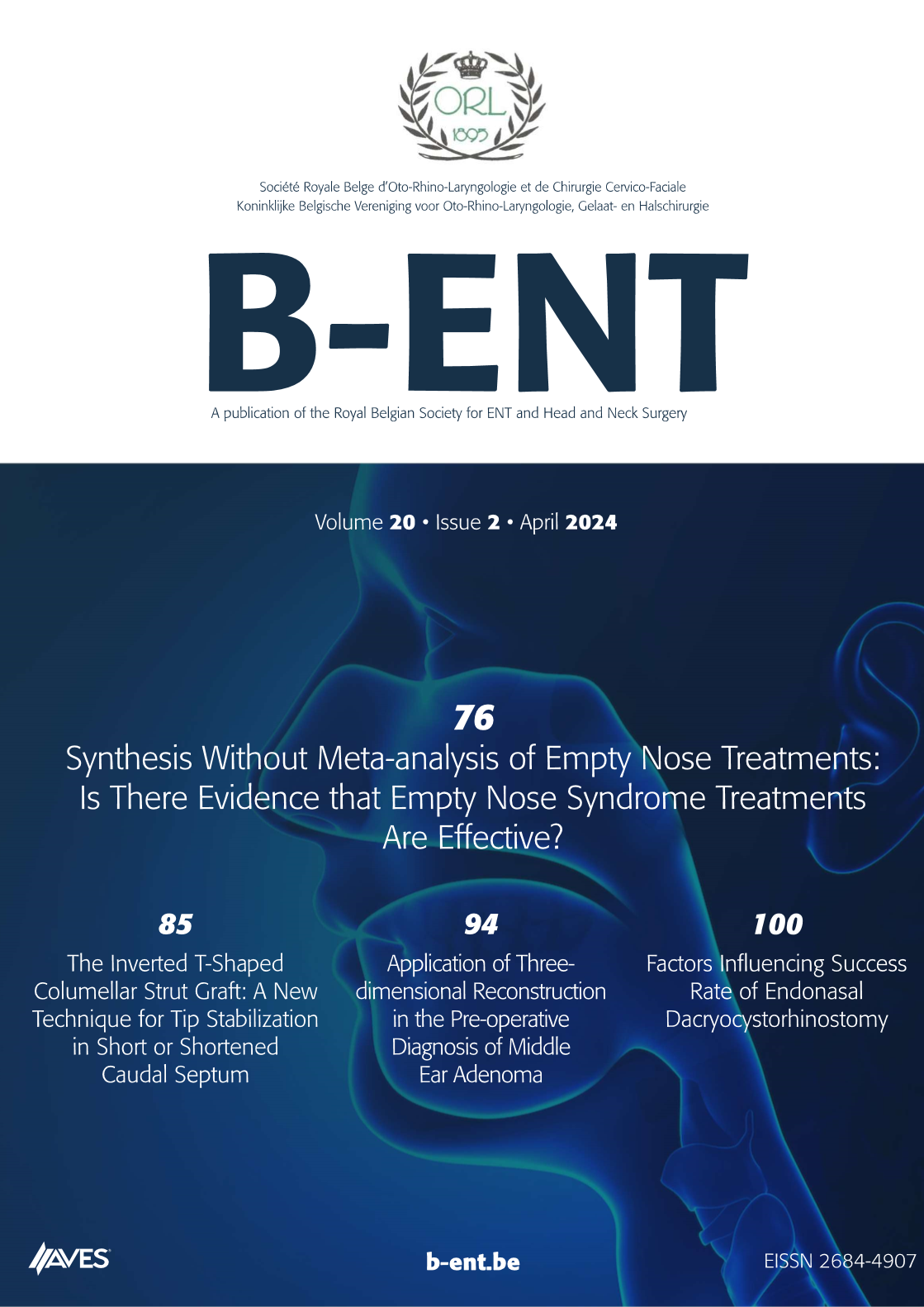Felix tympanoplasty: functional results of a single surgeon’s technique in the scope of a literature review on influencing factors. Objective: The outcome of myringoplasties may be affected by local, general or epidemiologic factors. We reduced the variability of the surgical procedure to a minimum, in order to better evaluate the role of these factors on the functional results. To accomplish this, a single surgical procedure performed by a single surgeon was analysed in this retrospective study. The analysis was performed on a cohort study of patients who underwent the Felix tympanoplasty as their only operation.
Methods: Thirty-nine patients were included in the study from January 2001 to January 2011. Postoperative changes from preoperative levels of air-bone gaps were compared according to patient characteristics using linear regression models. We evaluated the following conditions: sex, age, rural or urban living, smoking, alcohol consumption, frequent infantile otitis, frequent adult recurrent otalgia, frequent adult recurrent otorrhoea, contralateral chronic otitis, tympanic membrane perforation size, tympanosclerosis, otorrhoea and inflammatory tympanic membrane at the time of the operation.
Results: Evidence of a larger air-bone gap reduction was detected for patients with a history of frequent otorrhoea and with a perforation size >50% of the area of the tympanic membrane. In contrast, there was evidence of a lower air-bone gap reduction detected for patients with tympanosclerosis. The impact on hearing of all other variables did not reach statistical significance.
Conclusion: Patients with a history of frequent ear discharge and those with large tympanic membrane perforations had better chances of obtaining greater improvement to their hearing postoperatively. The presence of preoperative tympanosclerosis decreased the mean change from preoperative to postoperative air-bone gaps.



.png)
